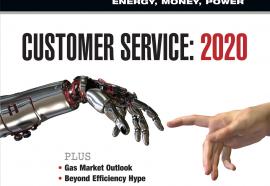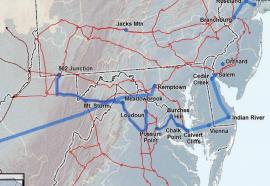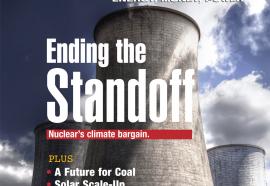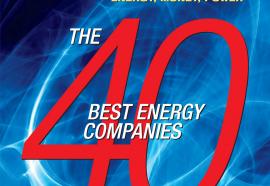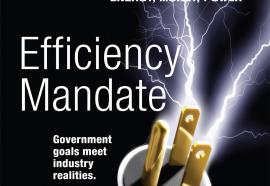Jon Wellinghoff
Tomorrow's T&D
The most economical energy savings might be found in grid efficiency.
Power delivery efficiency gains constitute a valuable utility asset that can offset or defer new generation and T&D investments. Enabling technologies, utility demonstration projects and supporting regulatory frameworks are needed to validate potential savings.
Federal-State Partnership
Transforming DR and smart-grid policies into reality.
Regulatory policies are evolving to make demand response and smart-grid planning a reality across the country. Cooperation between federal and state lawmakers will allow local flexibility within a uniform national framework.
Wellinghoff's War
FERC fights for the green-grid superhighway—even if Congress won’t.
The Senate’s deadlock over carbon cap-and-trade legislation has not deterred FERC Chairman Jon Wellinghoff from an agenda bent on promoting renewable energy and fighting climate change. Last fall, even as Congress dithered, FERC launched a landmark initiative that likely will lead to sweeping new rules for expanding the nation’s electric transmission grid, grounded on Wellinghoff’s belief in wind, solar, and green power resources.
Negawatt Pricing
Economists take sides in the battle for DR’s soul.
Back when the U.S. economy and power consumption still were bubbling, PJM reported in August 2006 that customer curtailments during a week-long August heat wave had generated more than $650 million in market-wide energy savings—all at a mere $5 million cost, as measured in direct payments made to the demand response (DR) providers, set according to wholesale power prices prevailing at the time. Where else but the lottery can you get an instant payoff of 130-1?
Green Contracting
Structuring renewable agreements to survive change.
The potential for a federal renewable energy standard (RES) and carbon regulation, considered with the effect of state-imposed renewable energy standards, is fueling a strong, but challenging, market for renewable energy. Utilities are competing to sign up the best new projects, the types of renewable technologies available are increasing, and there are various government stimulus programs for energy; yet, the financial markets still are hesitant. Against this backdrop, how should contracts for power from new renewable resources be shaped so that those deals will look as good five, 10 and 15 years after execution as on the day the ink dries?
RTOs and the Public Interest
Defining the mission when the consumer plays second-fiddle to the needs of the market.
Six months back, when ISO New England was mulling over various reforms that FERC had mandated last fall in Order 719 for the nation’s six regional transmission organizations and independent system operators (RTOs and ISOs are interchangeable terms in this column), the ISO refused point blank to include in its mission statement a proposal by stakeholders that it should operate the bulk power system at the “lowest reasonable cost.”
Compliance Program Guidance
The industry debates how far FERC should go.
Since the Energy Policy Act was enacted in 2005, the domestic power and gas industry has experienced several years of FERC compliance enforcement history. Including the settlements entered into in 2007, total penalties levied and agreed to by companies are close to $100 million over the past two years. Given the high stakes, some industry stakeholders have suggested that FERC could provide more comprehensive guidance on what it means to have an adequate compliance program and what constitutes that compliance.
Federalizing the Grid
Renewable mandates will shift power to FERC but pose problems for RTOs.
A recent survey conducted by the U.S Office of Personnel Management and reported by the Washington Post on March 13 ranked the Federal Energy Regulatory Commission as eighth best of some 37 federal agencies in terms “talent,” and third in “leadership and knowledge.”
Rethinking 'Dumb' Rates
Achieving the smart grid’s potential requires a revolution in electricity pricing.
Achieving the smart grid’s potential requires a revolution in electricity pricing. Smart metering and smart rates might yield surprising and beneficial changes in the U.S. utility industry. But capturing those benefits will require an intelligent and careful approach to implementing dynamic pricing.


